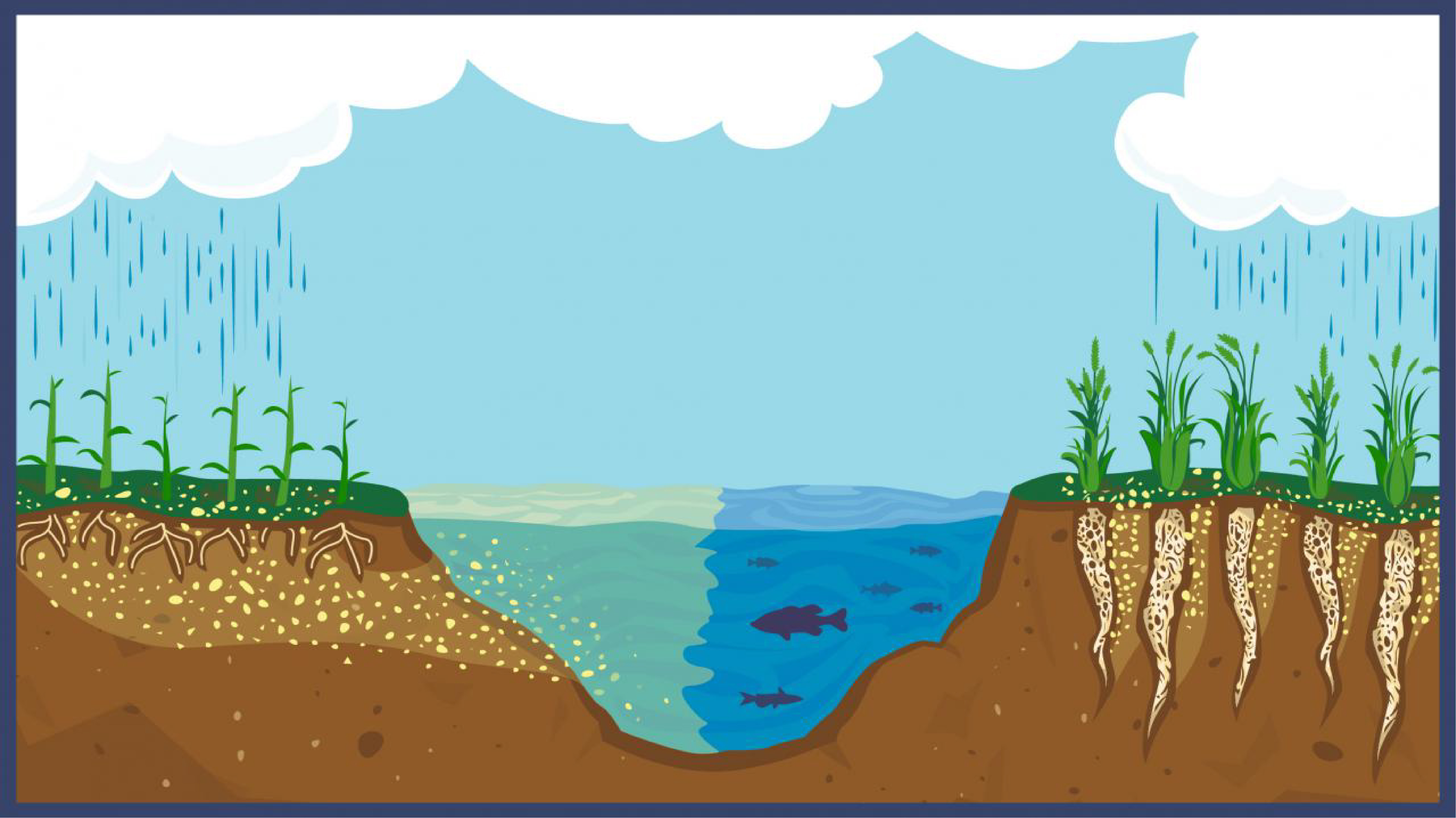Safer drinking water is around the bend (for some)
Common "row crops" like corn and soybeans (left half of illustration) fail to retain nitrates and other pollutants; on the right side, the deep root systems of new crops like Kernza help to capture nitrates and prevent runoff into our water supply. (Illustration by Kimberly Boustead and Emily Sauer.)
Minnesota’s leaders are taking action to fix one of our biggest public health problems: drinking water polluted by farm chemicals. As reported by the Star Tribune, a new Minnesota Department of Agriculture rule will limit the use of nitrogen fertilizer in vulnerable areas of the state, with the goal of reducing the amount of dangerous nitrates that infiltrate our waterways and put human health and aquatic life at risk.
FMR’s Trevor Russell calls the long-overdue move a “timid” step for water quality but “a giant step for the Minnesota Department of Agriculture,” an agency that has historically been reluctant to regulate cropland agriculture for water quality purposes.
A quarter of the state draws water from private wells that aren't helped by the plan. FMR is committed to continue working with the farm industry and our elected officials to find more comprehensive solutions, like diversified cropping systems, beyond corn and soybeans, and keeping fields planted year-round to minimize runoff.
Thank you to the 2,000+ FMR River Guardians who weighed in on these new nitrate regulations and promoted the agricultural programs that we need to protect our river and drinking water supplies long-term! (Join us!)
Learn how the new regulation impacts your community — and why nitrates are such a thorny problem — in this Star Tribune article by Jennifer Bjorhus.
